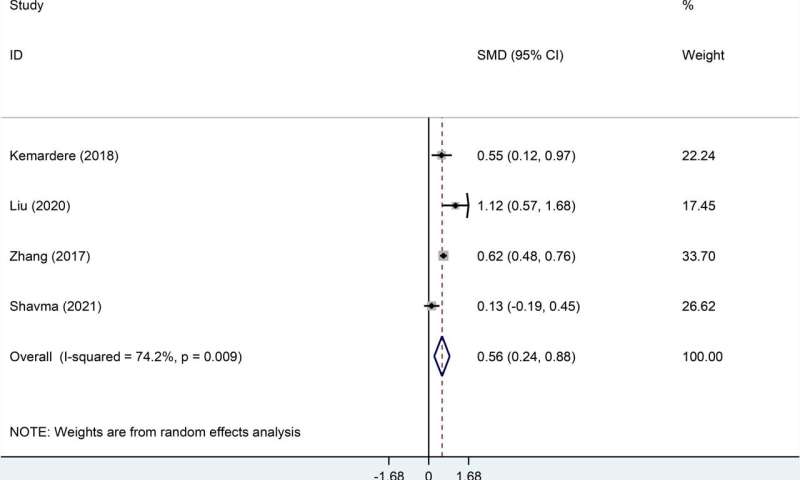Neutrophil-to-lymphocyte ratio as an effective biomarker for meningioma: A systematic review and meta-analysis

Previous studies showed that tumors are associated with an increased inflammatory burden, and neutrophil-to-lymphocyte ratio (NLR) is also associated with inflammatory conditions. However, there is no review on the role of NLR in meningioma. The goal of this study was to see if NLR has any prognostic and diagnostic value in meningioma.
A total of 23 studies were included in the systematic review, of which 13 were included in the meta-analysis.
It was found that patients with high-grade meningioma had higher levels of NLR compared to those with low-grade meningioma (standardized mean difference [SMD] = 0.72, 95% confidence interval [CI]: 0.21–1.23, p = 0.006)]. In addition, we found that there was no difference between NLR levels of patients with meningioma and those with gliomas (SMD, −0.19, 95% CI: −0.47–0.10, p = 0.20). Also, higher levels of NLR were found in patients with meningioma compared with healthy controls (SMD = 0.56, 95% CI: 0.24–0.88, p = 0.01).
Studies showed that an NLR > 2.4 differentiated high-grade and low-grade meningioma, an NLR > 2.74 differentiated high and low progression-free survival groups, and an NLR > 2.59 was associated with recurrence, with high sensitivity and specificity. However, the NLR did not predict postoperative pneumonia following meningioma resection.
Because of the contradiction, our study did not clearly demonstrate the difference in NLR levels in meningioma and other pathologies, so more studies are needed on this subject.
NLR had significant diagnostic and prognostic value in meningioma. In general, we inferred a strong link between systemic inflammation assessed by NLR and meningioma based on elevated levels of NLR in patients with meningioma compared to healthy controls. In addition, NLR had significant predictive potential for the progression and recurrence of meningioma. The predictive potential increased when combined with other diagnostic tools such as fibrinogen level. NLR may guide clinical decision-making as an inflammatory marker and its relationship to therapeutic efficacy.
The study is published in the journal Exploratory Research and Hypothesis in Medicine.
More information:
Shokoufeh Khanzadeh et al, Neutrophil-to-lymphocyte Ratio as an Effective Biomarker for Meningioma: A Systematic Review and Meta-analysis, Exploratory Research and Hypothesis in Medicine (2023). DOI: 10.14218/ERHM.2023.00068
Provided by Xia & He Publishing Inc.